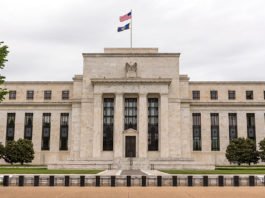- Inflation heated up in July as headline CPI prices rose 0.3% (month-on-month) as expected. Headline inflation picked up to 1.8% year-on-year helped by a jump in energy prices.
- Core prices were hotter-than-expected, rising 0.3% for the second consecutive month in July. As a result, the 12-month change firmed to 2.2% in July from 2.1% in June.
- The strength in core inflation was broad-based, with increases in the indexes for shelter (+0.3% m/m), medical care (+0.5%), airline fares (+2.3%), household furnishings and operations (0.4%), apparel (0.4%), and personal care (+0.4%) all contributing. The index for new vehicles was one of the few to decline in July (-0.2%).
- Zooming out, core services prices continued to show some heat (+0.3% m/m), and remained steady on a year-on-year basis at 2.8%. Core goods prices rose more modestly in July (+0.2% m/m), but it was the second straight month of prices increases for a category that is typically deflationary. Core goods inflation is now up 0.4% on a year-on-year basis, the strongest reading since 2012.
Key Implications
- July’s inflation data shows that June’s firming in core prices was not a one-month wonder. The move suggests that the Fed’s preferred core inflation measure, core PCE, may also show signs of firming in July. However, core PCE inflation is typically a few ticks lower than CPI, so it is likely to still be right around the Fed’s 2% target.
- It is likely no coincidence that prices for core goods have accelerated in the months since the White House raised the tariff rate to 25% on many imported goods. At the same time, a healthy economy is lifting prices for core services (up 3% annualized over the past 3 months), after temporary factors earlier this year held services inflation back.
- From the Fed’s perspective, it will look through one-time price increases that are the result of the tariff increase (to the extent it is able to disentangle the effects of the tariffs versus generally rising prices due to a hot economy). Moreover, after years of underperforming their target, core inflation is likely not hot enough yet to have the Fed too concerned. Given the latest escalation in the China-U.S. trade war we still expect the Fed to make another insurance rate cut in September. However, today’s data is a reminder that inflation is not dead and suggests that the Fed may not cut as much in the months ahead as markets currently expect.
